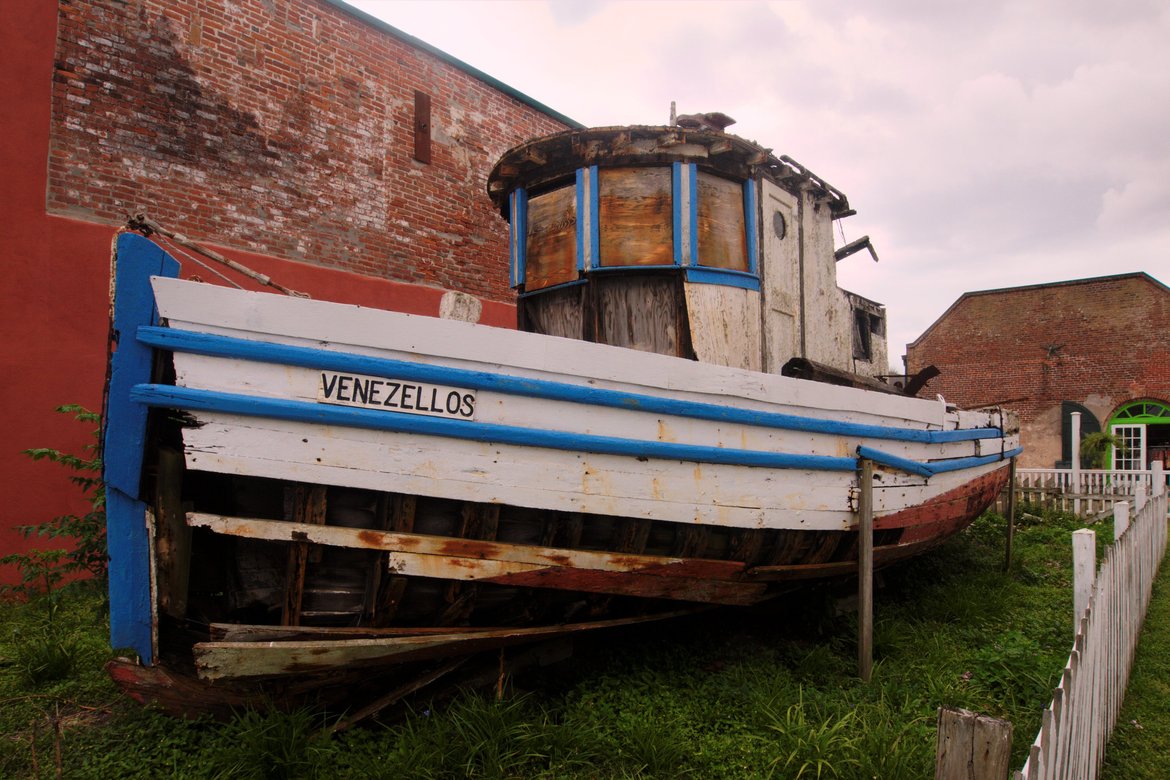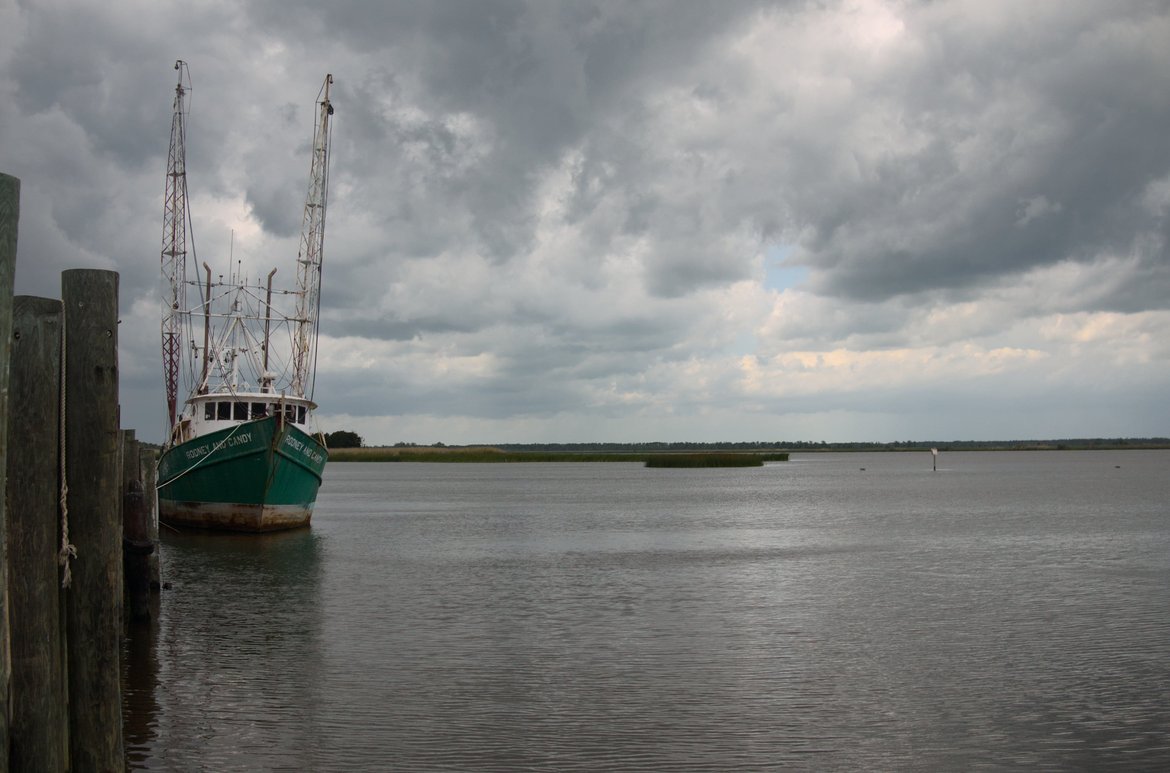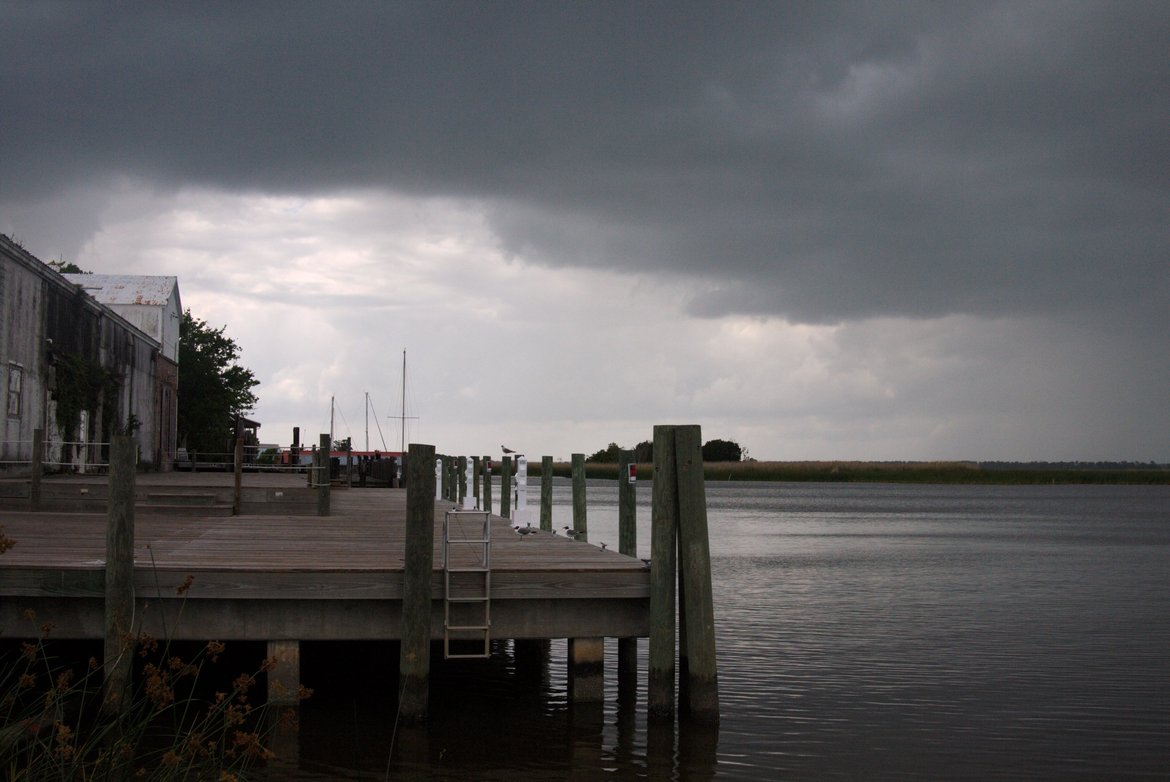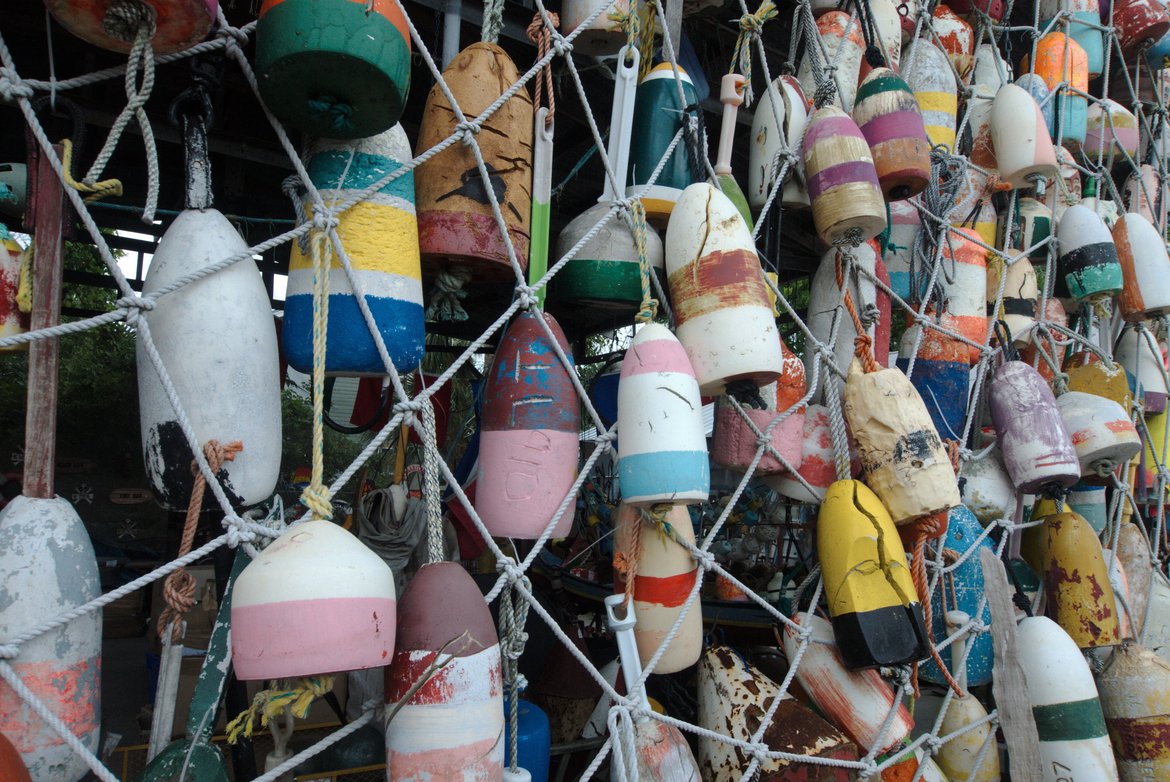Oysterman Wanted
Doug’s Seafood trailer is just that, an unassuming yellow trailer with red trim and lettering that reads, appropriately, Doug’s Seafood. Doug arrives on St. George Island every morning and parks in a vacant lot just west of the bridge. Come 5 P.M., Doug heads back to Eastpoint. In the mean time Doug and his trailer sit in the vacant lot, which is, like all vacant lots and driveways in the area, covered with the local version of gravel — oyster shells.
The shells give off a blinding white glare in the midday sun, driving you to the shade of the small awning Doug extends out to make the trailer more welcoming. As your eyes adjust to the shadows you’ll notice Doug himself sitting on a red plastic folding chair, perched amongst half a dozen white plastic coolers stocked full of local shrimp, scallops, oysters, snapper, grouper and even local favorites like mullet, if you ask for it.
I first met Doug while on a quest for shrimp. Not a lot was said, though I do remember Doug offering his thoughts on the weather, which were wrong. In fact Doug’s thoughts on the weather have been wrong pretty much every time I’ve heard them. But there aren’t a lot of locals found on St. George and even most of the permanent residents aren’t originally from the area. So I started talking to Doug in hopes of learning about the island and Apalachicola. I’ve gleaned a few things, but mostly I know a lot about Doug’s bypass surgery or the liver trouble that made him stop eating raw oysters. Whatever the case I’ve noticed my trips to Doug’s Seafood have become progressively longer and longer the more time I spend on the island.
Even if you never bother to talk to Doug you’ll get to know a few of his thoughts just from standing there under the awning, reading what’s scrawled across the side of the trailer. Thin permanent marker has been used to create a kind of unsolicited FAQ for potential customers — “yes it’s raw seafood”, “yes you have to cook it first” and “no it’s not ready to eat.” There are probably half a dozen phrases altogether. None exactly rude, but all carrying a sense of exasperation and all pointed enough to make you stop and think about what you’re about to ask before you ask it.
These are necessary, according to Doug, to make sure no one gets sick. They also probably help discourage the sort of poorly thought out questions that might irritate the sole proprietor of Doug’s Seafood.
It seems to work. Doug manages to smile to nearly everyone and never so much as roles his eyes — visibly anyway — in the face of what I can only assume is a Herculean confrontation with Tourist Americanus that would leave many a lesser man indignantly scrawling even more magic marker across the side of the trailer. Or worse.
Doug does, if you talk about something other than the weather or his heart, come rather quickly around to the problems of the local area, which are unsurprisingly, all a result of tourism. He’s never exactly moaned about tourists, but he does very nearly spit when he says the word, something I recognize from growing up in a seaside town full of people who also simltaneously needed and disliked tourists. But of course here I’m a stranger here like the rest. I may know that I have to cook the shrimp, but otherwise I’m as much a part of Doug’s problems as anyone else on St. George Island.
The problem is we’ve all become tourists. None of us are shrimpers or oystermen anymore.
That’s why all coastal towns will eventually convert from real industries like fishing or shipping ports, to tourism-based economies. There’s no stopping it. If your patch of coast hasn’t done it yet, and this one is still holding out hope, it will. Best get your sarcastic FAQ boards painted now, before the tide of tourism washes the last of industry out to sea.
There’s another sign I think about, just over the bridge in Eastpoint, Oysterman Wanted it reads. Every time I drive by I find myself wondering, will anyone ever call that number? I love oysters, especially fresh off the boat, but it seems like you might as well hang out a sign asking for cobblers or loom workers.
Part of me thinks that the sign is just there to bolster the local spirit. Apalachicola is doing an admirable job of fighting tooth and nail to keep things as they once were, when the Bay was full of oystermen and the horizon at night lit up with trawlers dragging their nets. But even people like Doug seem to know that world is doomed. Even the people resisting the transition know they’re no longer fighting for their way of life. Nor are they even fighting to give their children some small slice of the life they loved. They’re just fighting to keep the thinnest resemblance of what they’ve always known around until they leave this world. They’re fighting to keep from having to watch the death of everything they know.
The world of oystermen and local fishing industry will fade away though. How could it not? Once there were loom workers, now there are not. Once there was a seemingly endless shoreline to dock a boat beside, soon there will be nothing but condos. Economies change; people change. And so it goes.
And yet, and yet. There’s something that feels different about the way tourism grinds other things to dust. I think it’s the finality of it. Once a place makes that transition, once the economy crosses that invisible threshold and goes full tourism there seems to be no coming back. So long as the tourists come everyone loves their new tourist economy. And then one day the tourists stop and the town dies. Ask the residents of the Salton Sea. Ask Mystic, Connecticut. Ask the Adirondacks. Coral Gables. Niagara Falls.
Tourism is a fickle thing, but that’s not really the long term problem if you live in a tourist economy. The problem is that tourism does not create a demand for useful things. Oysters are useful things. Shrimp are useful things. Colorful buoys and a finely sanded boardwalk for strolling are only useful things so long as there are tourists to buy and occupy them.
In the beginning there are always tourists, and in some places there seemingly always will be, but tourism is a marketing-driven economy and eventually someone else comes along with better marketing and more money. The hotels go vacant. Restaurant tables stand empty. Buildings fall into disrepair and soon all that’s left are the facades, the boardwalks with faux pilings too weak to actually tie up a trawler and no one left who know how to sail one anyway.
It’s hard work fishing; even harder to be an oysterman. I wouldn’t do it; I doubt I could do it. Far easier to open a bar, build a new hotel or maybe sell trinkets just across from that really nice and shiny new boardwalk.
And so it goes.




Thoughts?
Please leave a reply:
All comments are moderated, so you won’t see it right away. And please remember Kurt Vonnegut's rule: “god damn it, you’ve got to be kind.” You can use Markdown or HTML to format your comments. The allowed tags are
<b>, <i>, <em>, <strong>, <a>. To create a new paragraph hit return twice.